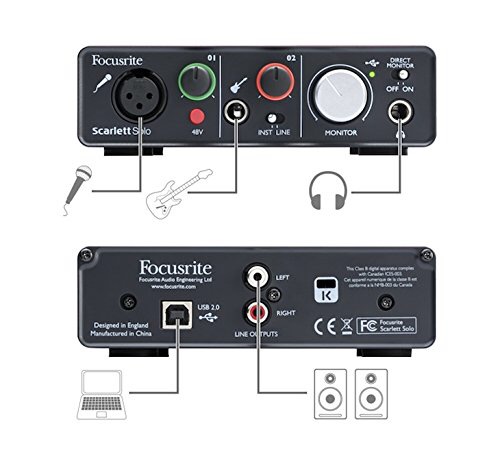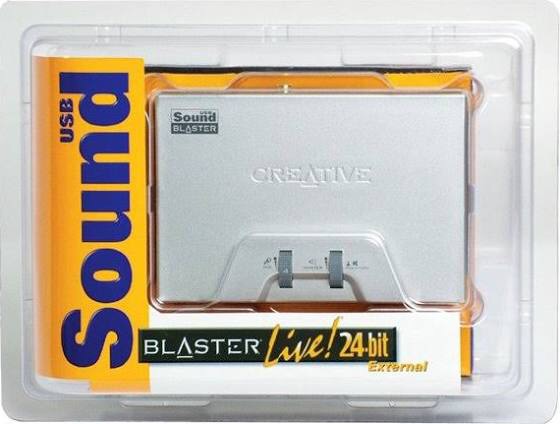Hi, I have a new microphone and it has a electrical buzzing sound when i try to record using it. It is not the soft buzzing sound that can be removed, after searching up about it i realised that it should be the cause of ground loop. So i decided to buy a ground loop insolator for the problem but it still doesnt help. Does anyone have any experience or any idea to solve this?
Im using a laptop, a condenser microphone with 3.5mm head, i attach it to a usb sound card for the usb input, and a ground loop insolator.(Note. when i link the ground loop insolator the microphone isn't picking up any sound)
I suspect its the problem of the usb sound card because if i record without the microphone plugged to the sound card it still has the sound.
Thanks for helping :)
Comments
pcrecord, post: 453192, member: 46460 wrote: What is the sound c
pcrecord, post: 453192, member: 46460 wrote: What is the sound card make and model ?
Virtual 7.1 USB Sound card
Boswell, post: 453202, member: 29034 wrote: In addition to the info about the sound card, what make and model of microphone is it? What type of plugs are on each end of the cable?
BM800 Microphone[XLR-3.5mm]
Sound Card[3.5mm-USB]
Have you got the version of the BM800 with internal battery, or
Have you got the version of the BM800 with internal battery, or is yours one that needs external phantom power?
The BM800 has a balanced mono output. Your StarTech Virtual 7.1 sound card has unbalanced stereo inputs and outputs, so will not work with this microphone without an additional power supply, cabling, transformer or adaptors.
You need a sound card (audio interface) with at least one balanced mono input, and that should provide 48V phantom power if your particular model of BM800 needs it. If you do need to use phantom power, you must also use an XLR-XLR cable rather than an XLR-3.5mm jack cable with adaptor.
Boswell, post: 453254, member: 29034 wrote: Have you got the ver
Boswell, post: 453254, member: 29034 wrote: Have you got the version of the BM800 with internal battery, or is yours one that needs external phantom power?
The BM800 has a balanced mono output. Your StarTech Virtual 7.1 sound card has unbalanced stereo inputs and outputs, so will not work with this microphone without an additional power supply, cabling, transformer or adaptors.
You need a sound card (audio interface) with at least one balanced mono input, and that should provide 48V phantom power if your particular model of BM800 needs it. If you do need to use phantom power, you must also use an XLR-XLR cable rather than an XLR-3.5mm jack cable with adaptor.
I see, well it actually can record if I use it along with my current usb sound card, its just that there is a buzzing sound. Not saying that its ground loop but basically the sound of any ground loop buzzing if you search up the internet. Also i mentioned that the sound exists if i record without my microphone tho. like plugging in only the usb card and just record like that, the sound is still there.
Btw im using the bm800 without battery. And what are the examples of usb sound card that has balanced mono output?
fingerdance, post: 453256, member: 50855 wrote: And what are the
fingerdance, post: 453256, member: 50855 wrote: And what are the examples of usb sound card that has balanced mono output?
Are you using a laptop?
As far as an audio interface (sound card) with a mono input.
Here’s the one I have, and think it’s a great buy. I got mine for $85 on sale.
We get these queries often here... And I will suggest the same t
We get these queries often here...
And I will suggest the same to you as both Kyle ( kmetal ) and Marco ( pcrecord ) have, and as we've suggested to others ...... and that is that your current sound card wasn't designed for pro audio production. Built-in soundcards that are installed at the factory, and which come with virtually every computer from "big box" retailers, are designed for basic audio streaming (YouTube) and for gaming.
Your quality will get a lot better if you invest in a dedicated, standalone mic pre/converter, like the Focusrite that Kyle mentioned in his post above. They are not all that expensive, a basic 2 channel USB pre/i-o would set you back by around $100, (give or take). This type of pre will have proper input connections - XLR and 1/4" - and will have its own gain control, along with Phantom Power which supplies voltage for condenser mics. (You won't have to worry about batteries anymore)...
As an added note, if you do end up getting a dedicated pre as mentioned, make sure you disable your old sound card, and select the new USB model as your default device. This will help to insure that your system knows which device to use for all your apps, whether it's audio recording, streaming audio from YouTube or other sites, and gaming.
FWIW
For a period of time I was using a soundblaster usb soundcard fo
For a period of time I was using a soundblaster usb soundcard for recording. I hooked the speakers (home stereo receiver/speakers) up to the soundcard for monitoring, and I used my tascam 4 track recorder as my pre amp, feeding the soundcards line ins.
The quality wasn’t fantastic, but their were no extraneous hums and buzzes. It got the job done and allowed me to digitize my tape recordings, and do overdubs on top.
Since it’s not ‘01 anymore there’s plenty more options available.
You can even get usb interfaces that hook up right to a guitar or mic.
I do remember being excited about “going digital” w that soundblaster, and the $35 I paid cleaned out my pockets, lol. Interestingly it did surround sound, which my Daw did not, and handled 96k sample rates, which is still considered standard.
Back then that was a cheap workaround, nowadays the workarounds cost more than a basic interface would.
Lol for the sake of personal nastalgia here it is in its glory.
Lol for the sake of personal nastalgia here it is in its glory. The Soundblaster, 24bit usb external soundcard, model SB0490. Lots of fun w that thing. I’m not suggesting this be used, just waking down memeory lane. Funny thing is it’s still going on eBay for $30. Lol
Yeah, I had one of those as well. For quite a while after I had
Yeah, I had one of those as well. For quite a while after I had stopped using it as an analogue audio input, I continued to transfer S/PDIF data streams through it thinking that it surely must pass digital data through unmodified. I was wrong! It even reconstructed the digital data and added uninvited reverb.
It's still in the back of one of my cupboards somewhere. If I really could get $30 for it on Ebay, it might just be worth the effort of putting it on there.
It's funny to read that we had similar starts. I had a soundbla
It's funny to read that we had similar starts.
I had a soundblaster live and a soundblaster 16 installed in my computer for a while. I figured the drivers didn't support 2 of the same soundcard but I was able to make 2 different ones work...
Combined with a cheap Peavy mixer, that's the way I did my first recordings and got the sickness of learning and get better gear ever since... ;)
DonnyThompson, post: 453267, member: 46114 wrote: We get these q
DonnyThompson, post: 453267, member: 46114 wrote: We get these queries often here...
And I will suggest the same to you as both Kyle ( kmetal ) and Marco ( pcrecord ) have, and as we've suggested to others ...... and that is that your current sound card wasn't designed for pro audio production. Built-in soundcards that are installed at the factory, and which come with virtually every computer from "big box" retailers, are designed for basic audio streaming (YouTube) and for gaming.
Your quality will get a lot better if you invest in a dedicated, standalone mic pre/converter, like the Focusrite that Kyle mentioned in his post above. They are not all that expensive, a basic 2 channel USB pre/i-o would set you back by around $100, (give or take). This type of pre will have proper input connections - XLR and 1/4" - and will have its own gain control, along with Phantom Power which supplies voltage for condenser mics. (You won't have to worry about batteries anymore)...
As an added note, if you do end up getting a dedicated pre as mentioned, make sure you disable your old sound card, and select the new USB model as your default device. This will help to insure that your system knows which device to use for all your apps, whether it's audio recording, streaming audio from YouTube or other sites, and gaming.
FWIW
I see, the solution is basically a good sound interface. So just to clear another doubt, will there be any difference or could my problem be solved if i were to get a phantom power supply(not interface, just power supply)?
fingerdance, post: 453294, member: 50855 wrote: I see, the solut
fingerdance, post: 453294, member: 50855 wrote: I see, the solution is basically a good sound interface. So just to clear another doubt, will there be any difference or could my problem be solved if i were to get a phantom power supply(not interface, just power supply)?
No. Your present arrangement has two main problems: (1) no 48V phantom power and (2) unbalanced inputs. Both these problems are solved by an audio interface such as the Focusrite Scarlett Solo mentioned earlier.
I promise you that if you go with an external USB pre/interface
I promise you that if you go with an external USB pre/interface such as the Focusrite - or a similarly priced Presonus - that you're gonna wish you'd done it sooner.
2 channels, Balanced inputs, adjustable Gain control, phantom power, headphone amp/jack and a decent converter all in the same device, for about $100 (US).
I guarantee you won't be disappointed. ;)
DonnyThompson, post: 453296, member: 46114 wrote: I promise you
DonnyThompson, post: 453296, member: 46114 wrote: I promise you that if you go with an external USB pre/interface such as the Focusrite - or a similarly priced Presonus - that you're gonna wish you'd done it sooner.
2 channels, Balanced inputs, adjustable Gain control, phantom power, headphone amp/jack and a decent converter all in the same device, for about $100 (US).
I guarantee you won't be disappointed. ;)
I think I got it. Thanks!








fingerdance, post: 453190, member: 50855 wrote: I suspect its th
What is the sound card make and model ?